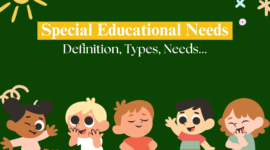Generally, behaviour management for students refers to all initiatives that the school and teachers undertake to provide activities that constitute meaningful learning experiences including the management of spaces, materials, times and grouping, and that may impact student behaviours. Many famous schools in Indian, specially schools in Dehradun (the educational capital of India) consider the behaviour management as the top priority for the school discipline.
Two types of factors that are considered here:
- The physical and human aspects of school and classroom – antecedents of behaviours.
- The responses and reactions of the teacher and other students – consequences ofway of acting. Understanding the impact of responses can help teachers reinforce appropriate behaviour patterns and not contribute to inadvertently maintaining inappropriate behaviours.
Behaviour management for students is based on some assumptions
Managing student behaviour is based on some assumptions that will be important to clarify. According to these assumptions, preventive and proactive strategies, styles of response to student behaviour that can be described according to 5 management principles: Prediction, Objectivity, Evaluation / Responsibility, constructive and Collective Responsibility.
Prediction
This concerns the identification and response to problems that are predictable by formulating appropriate rules for specific situations. The following recommendations are:
- few rules
- rules on specific aspects
- realistic rules
- positively formulated rules
- rules formulated as a shared commitment rather than an order to encourage feelings of responsibility
- Rules implemented through ads, before the start of activities where certain behaviours may occur.
To remind students which rules should, in a concrete situation, guide behaviours – how students should behave.
Objectivity
Good teachers are those who can create an atmosphere in the classroom that, being calm and relaxed, exudes goal-oriented activity. That is, good managers, keep their goals in mind and pursue them. They are also able to convey these goals to students. Some clues to the achievement of this assumption are pointed out:
- Body language and the use of voice – The physical presence of the teacher, conveyed by his posture and tone of voice, is interpreted by the students, not only to appreciate what kind of teacher lies ahead but to assess situations as they unfold. Body expression and voice are two great tools of teachers. Research has made it possible to point out some clues about its effective use, namely, to convey to students an image of a teacher who is assertive, without appearing threatening, flexible without appearing undecided. Some important aspects: projected and modulated voice – no shouting; posture – standing relaxed, avoiding stooped shoulders, arms crossed; approach students to reduce social distance; nod, smile, maintain eye contact and show interest when the student is speaking.
- The beginning of the lesson – At first ready to start the lesson which is based on prior lesson preparation; the establishment of routines that students can autonomously follow so that they can start work immediately without the need for specific instruction from teachers, Try to start class with a positive sign.
- The variety of activities – Ensuring a variety of activities over the course of the class, making it livelier and interesting for students.
- Access to materials – Problems usually arise when students do not have the necessary materials to perform the tasks.
- The layout of the classroom – The variety of activities assumes that the arrangement of the room is not always the same and that different arrangements and combinations can be designed depending on the students’ activities and type of grouping like individual work, in pairs, in small groups.
Assessment / Accountability
The aim of teaching is to encourage the accountability and self-assessment of students. For example, work hard, raise your hand before speaking, and check the work before handing it over. It is, therefore, about teaching students behaviours that are considered desirable and then finding and using ways to hold students accountable for monitoring their own progress.
Constructive behaviour management
Constructive behaviour is about creating a climate of trust, cooperation and competence among students, that is, reinforcing self-confidence in their ability to learn and develop a spirit of self-help, and aims to gain student cooperation. Here are some clues to implement: building on students’ knowledge and ensuring opportunities for success, encourage students to recognize their successes, promote cooperative arrangements and capacities by organizing activities, calling for peer and small group work and promoting peer mentoring.
Collective Responsibility
This fifth principle underlines the importance of the development of social responsibility concepts and the possibility of promoting them within the school and classroom through the participation of students in the definition and implementation of rules which helps students understand their behavioural problems and how to improve them. There are no special skills for teaching children and young people with emotional and behavioural difficulties that are not part of the skill set that can be identified in “good teachers”.
The five behaviour management principles listed above are not essentially new or special. The intention was to clarify them and to show some examples of how they can be implemented. Now we hope that teachers will find in these examples sources of inspiration for their practice.









